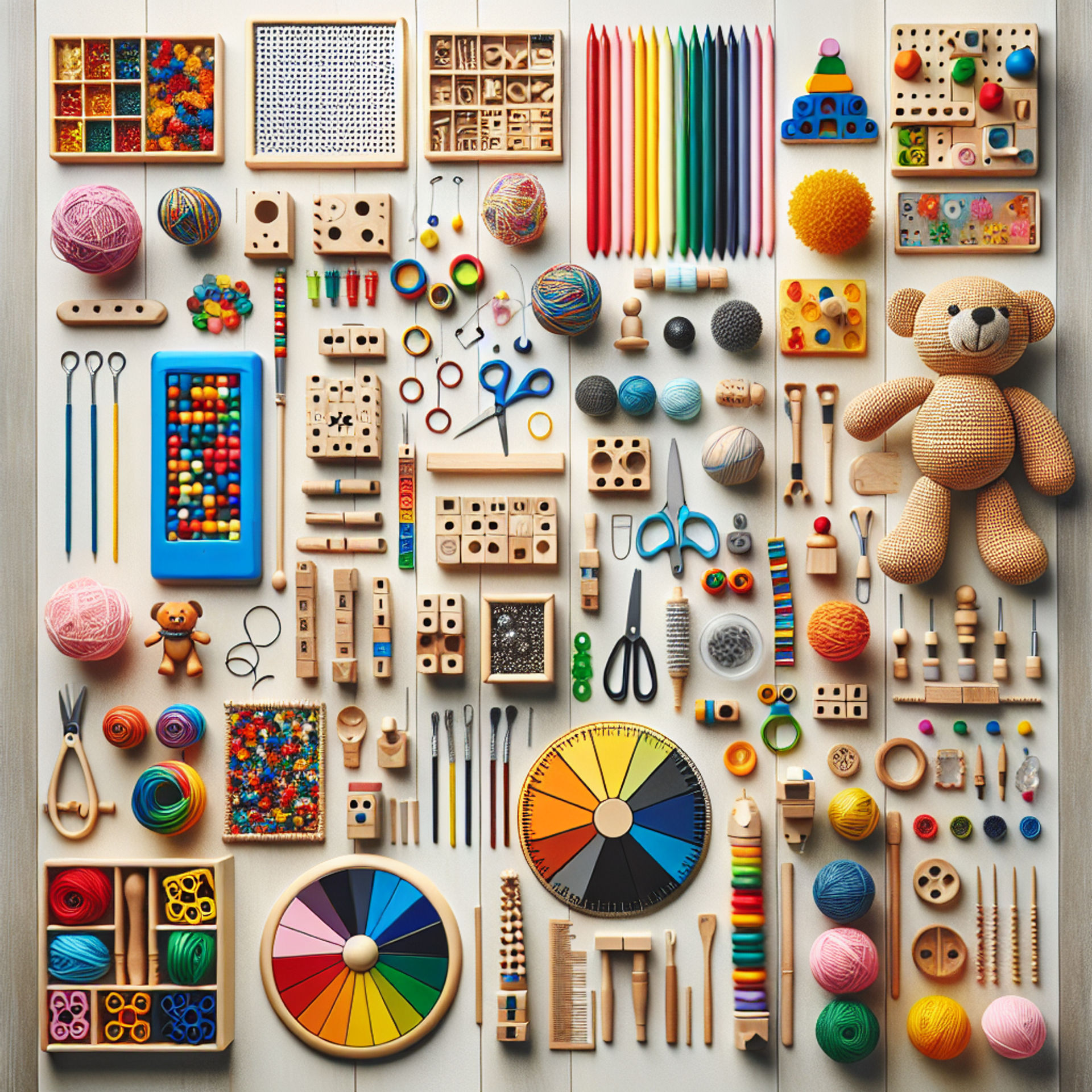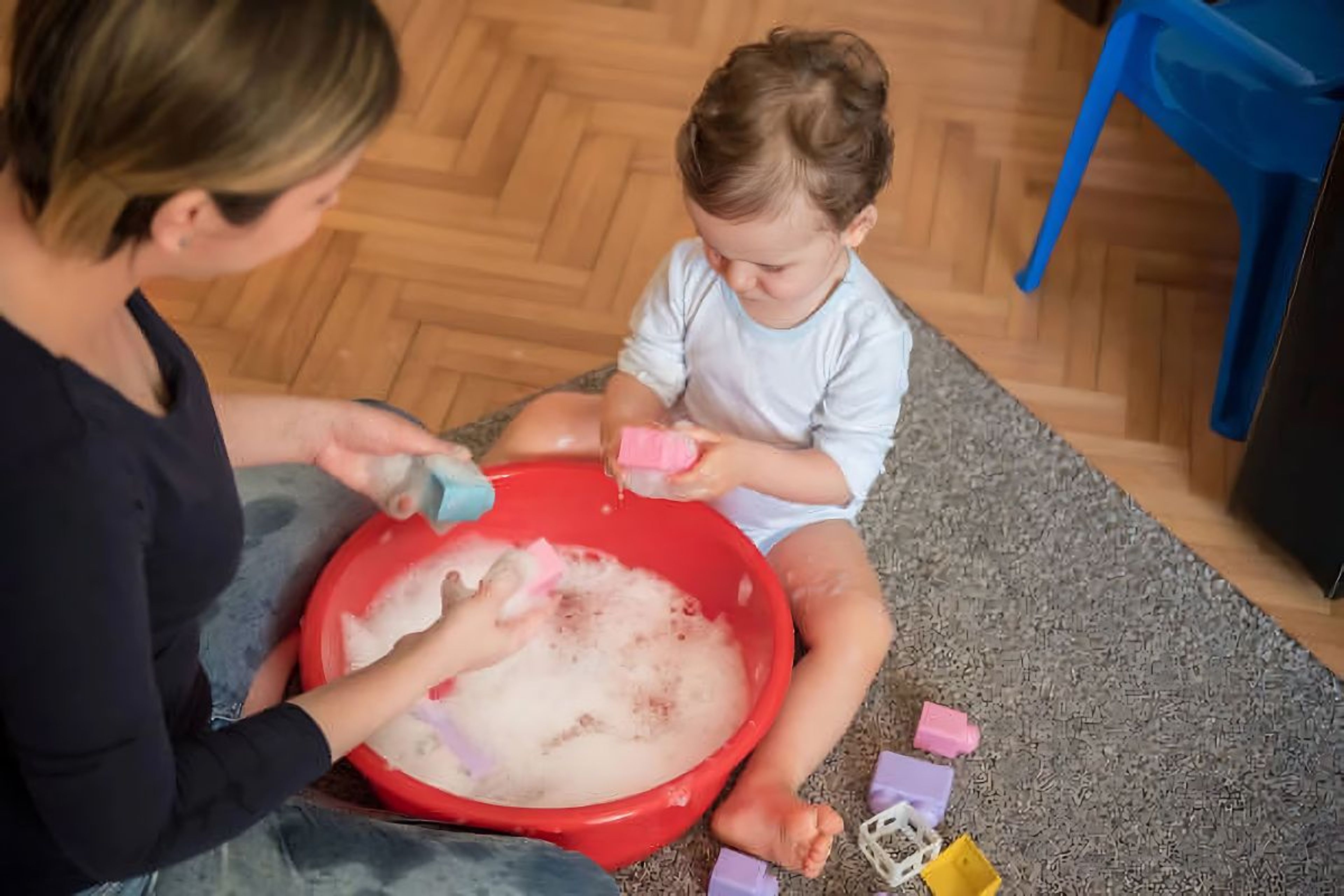Top 10 Toys That Boost Motor Skills and Why Your Child Needs Them

Can you recall the thrill of your first bike ride or the satisfaction of writing your name all by yourself?
These milestones in a child's life are not just momentary joys; they are stepping stones in the vital development of motor skills.
Indeed, the journey of physical growth is peppered with such significant achievements. Often, this route can present obstacles, causing children to stumble and sometimes lose confidence.
But just as a steady hand helps a child balance on a bike, well-chosen toys can guide them through the maze of motor skill enhancement, turning struggles into triumphs and fostering a robust sense of self-assurance.
What are Motor Skills and Why are They Important?
Motor skills are the foundation of every physical action, from the simplest gestures to complex sequences of movements.
Let's break it down into 2 categories.
- Gross motor skills - It involves large muscle groups and movements like walking or jumping.
- Fine motor skills - This pertains to more refined actions such as grasping a pencil or buttoning a shirt.
Both gross and fine motor skills are the foundation upon which a child's holistic development is built.
They are important for physical health, autonomy, and even academic success. They influence everything from sports participation to handwriting and beyond.
Common Struggles Children Face with Motor Skills
Delays or difficulties in this area can be caused by a variety of factors, including genetic predispositions and environmental influences.
Some children acquire motor skills more slowly than others.
Neglecting these challenges may lead to poor hand-eye coordination, difficulties in academic tasks that require fine motor control, and diminished self-confidence.
The Benefits of Toys in Motor Skill Development
Enter the world of play, where toys are not just objects but tools for learning and growth.
The connection between toys and motor skill development is deeply ingrained in human nature.
This partnership strengthens both physical and mental abilities, laying the groundwork for future learning by improving coordination, balance, and cognitive skills.
Top 10 Toys That Boost Motor Skills
1. Threading Beads
Why do those shiny, colorful beads captivate children so deeply? Threading beads is a fun and creative way to help children develop their fine motor skills.
Suitable for children as young as three, this toy helps children develop their fine motor skills as they sort through a rainbow of beads and challenge their dexterity by spinning each one onto a string.
Threading is a simple and versatile activity that encourages children to focus intently as they create unique patterns, which in turn sprinkle the seeds of creativity in their young minds.
By setting objectives such as replicating a pattern or achieving a certain length, parents can transform playtime into a skill-building adventure.
In addition, as children maneuver the beads, they develop their pinch grip—a skill that is essential for handwriting.
2. Lacing Cards
Lacing cards may seem old-fashioned in the age of digital entertainment, but they still have a lot to offer when it comes to developing fine motor skills.
These flat cards with pre-punched holes encourage children to weave laces through them, mirroring the intricacies involved in tying shoes or fastening garments.
Preschool children, with their boundless curiosity and endless energy, find delight in transforming laces into patterns and pictures—while also sharpening their hand-eye coordination.
Each passage of the lace strengthens the pincer grasp, a fine motor skill essential for gripping pencils, buttons, and zippers. The repetitive motion calms and focuses the mind, preparing children for the structured tasks of school life.
Furthermore, lacing cards come in a variety of shapes, from simple geometric designs to complex pictures, allowing for a progression in difficulty, which ensures that as a child's skill level rises, the toy continues to offer a rewarding challenge.
3. Wooden Blocks
Wooden blocks have been a staple in children's play for centuries, and they continue to be an important tool in the development of both gross and fine motor skills.
These toys are among the first that children interact with, engaging them as early as one year old. As toddlers play with blocks, they are unknowingly developing their coordination and spatial awareness.
Because blocks can be used in so many ways, each session of play is different from the last. This means that children have endless growth opportunities.
Beyond motor development, blocks introduce the concepts of balance and gravity, teaching children about physics through trial and error.
Children learn to build structures by experimenting with different combinations of blocks, and they refine their technique as they go along.
The process of building and rebuilding not only reinforces motor skills but also teaches resilience, as children are encouraged to keep trying despite setbacks.
4. Lego
Lego, the tiny, vibrant bricks that have ignited imaginations and fine motor skills for generations, are known around the world.
Legos come in a wide range of sizes and complexities, making them suitable for many age groups. Children typically start playing with Legos around four years old—when they are developing an interest in creating things and manipulating their environment.
The snapping together of these pieces requires precision and control, which is directly related to the skills necessary for writing and other precise hand movements.
As children delve deeper into the world of Lego, they explore and replicate their surroundings through miniature models, in turn advancing their spatial reasoning and planning skills.
This timeless toy promotes elongated periods of concentration, fostering an environment where patience and attention to detail can flourish.
As children follow instructions to construct elaborate sets or allow their creativity to guide free builds, the tiny muscles in their hands become more adept. This sets them up for success in various everyday activities.
5. Peg Boards
Peg boards are a way for children to explore the world of color, shape, and coordination. Each peg is like a vibrant soldier in their army of tools—helping them conquer motor skill challenges as they develop.
These boards are suitable for preschool-aged children, who must match pegs to the appropriate holes to complete them. This process helps develop advanced hand-eye coordination.
With each peg placed, children not only hone their motor skills but indulge in the joy of creating patterns and pictures.
Not only do peg boards stimulate visual and tactile senses, but they also promote cognitive skills such as problem-solving and logical thinking.
As children learn to place pegs in the correct holes, they also develop an understanding of colors and shapes—basic yet critical concepts that underpin further learning. Moreover, peg boards often come with varying levels of difficulty, allowing them to remain relevant and challenging as a child grows.
6. Playdough and Tools
A ball of playdough is a blank canvas for children's imaginations, and it helps them develop fine motor skills.
Playdough's pliability makes it an ideal resource for enhancing fine motor function. As young as three years old, children delight in the tactile feedback they receive as they roll and press their malleable creations.
Playing with playdough can help children develop the fine motor skills needed to write.
Playdough tools that cut, pattern and extrude offer children additional levels of complexity in their play. They can practice gripping and maneuvering skills while using these tools.
Playdough is often used in educational settings as a therapeutic and educational resource, because it has many benefits that encompass physical, creative, and even emotional development.
7. Scissors
Scissors are an essential tool for children's development. Safety scissors, which have been specially designed to be used by little hands, not only help kids express their creativity but also improve fine motor skills and bilateral coordination.
Preschoolers learn to synchronize their movements while navigating a paper with one hand and snipping away at it with the other. This skill is important for many daily activities, such as tying shoes or buttoning shirts.
Scissors are an important tool for a child to learn how to use, because they help develop hand dominance—the ability to use one hand more skillfully than the other.
It is an endeavor that requires focus and discipline, serving not only the immediate goal of cutting but also contributing to long-term precision and manual dexterity.
8. Puzzles
Puzzles are a great way to develop cognitive and motor skills.
Each piece of a puzzle is like a small part of the whole, and it takes careful attention to detail to find where each one belongs.
Puzzles are available in a variety of forms and levels of difficulty, making it easy to find one that is appropriate for any age group. As children play with puzzles, they develop fine motor skills that can be applied to many other tasks—from tying shoes to typing on a keyboard.
Puzzles are a peaceful yet powerful teacher of patience and persistence. They instill a sense of accomplishment once completed, rewarding the child's focused effort and often collaborative play.
Puzzles also help children develop a keen understanding of spatial relationships and problem-solving strategies, two critical elements in their growth.
9. Drawing and Painting Tools
Drawing and painting tools offer a double benefit: they allow children to express themselves artistically while also developing their fine motor skills.
When children pick up a crayon, paintbrush, or chalk piece, they are exercising their finger and wrist muscles.
These artistic endeavors require different levels of pressure, movement, and directionality—crucial elements for tasks as diverse as writing, typing, and playing musical instruments.
As a child grows older, his or her use of colors becomes more deliberate and sophisticated.
The sensory experience of touching different textures and seeing vibrant hues come to life on paper enriches a child's understanding of the world.
Artistic activities are not just play for toddlers and young children; they are an integral part of development that stimulates creativity, emotional expression, and motor precision.
10. Balance Disc
A balance disc is a toy that combines the fun of a game with the developmental benefits of therapy.
Children as young as six are often drawn to the challenge of a dynamic surface that responds to their every move.
Children who use a balance disc to engage in physical activity develop better gross motor skills, as they learn how to control their core muscles and maintain stability.
As they wobble and right themselves, they build not only physical strength but also a fundamental understanding of their body's capabilities.
Incorporating balance disc exercises into play routines can help children improve their concentration, prevent injuries by promoting body awareness and agility—and have fun doing it!
It adds an extra dimension of fun to sports, while also helping players develop crucial coordination and balance skills.
The balance disc, though seemingly simple, is a powerful tool for helping young children develop the coordination and confidence they need to move well.
Conclusion
Motor skill development is a complex process, filled with challenges but also growth opportunities.
The toys we choose for our children can be more than just playthings; they can help them develop the skills and confidence they need to succeed in life.
Investing in the best toys for motor skills is an investment in our children's future. It ensures that they have the tools to build, balance, and boldly step into milestones of their lives.




